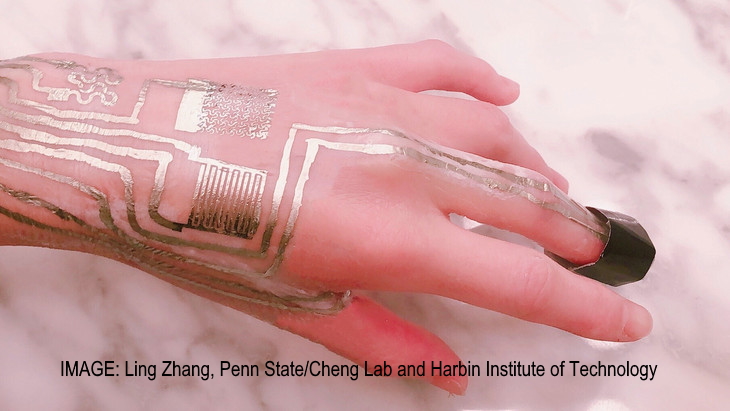On-skin printing of sensors could monitor COVID-19 symptoms

Scientists say on-skin printing could be used to create on-body sensors to monitor physiological signals and devices to wirelessly transmit the data.
A team led by Huanyu Cheng from Penn State University, say the sensors are capable of precisely and continuously capturing temperature, humidity, blood oxygen levels and heart performance signals. The next stage on the project is to target specific application, for example to develop a sensor network that could monitor symptoms associated with COVID-19.
Crucially, the technique to print the circuits onto skin can be carried out at room temperature, as earlier efforts have been hampered by the need to use heated materials, or printing onto a carrier layer before attaching them to the body.
Writing in the journal ACS Applied Materials & Interfaces, Cheng and colleagues say they have developed a “universal fabrication scheme” for on-body printing that makes use of a polyvinyl alcohol (PVA) paste and additives to reduce the temperature needed by the printing process.
Known as sintering, this type of printing typically requires temperatures of around 300 degrees centigrade to bind the silver particles used to form the circuits together.
By adding “nanoadditives” to the mix the scientists reduced that temperature to about 100 C, which allowed printing of circuits on clothing and paper but was still way too hot for use on skin.
Using PVA as a carrier layer along with calcium carbonate and changing the printing material was the key to enabling room temperature sintering, according to Cheng.
The PVA reduces printing surface roughness and allows for an ultrathin layer of metal patterns that can bend and fold while maintaining electromechanical capabilities. When the sensor is printed, the researchers can use a simple cool air blower to remove the water that is used as a solvent in the ink.
Once applied the sensors will resist immersion in tepid water for a few days, allowing washing, but can be removed easily with a hot shower.
“It could be recycled, since removal doesn’t damage the device,” Cheng said. “And, importantly, removal doesn’t damage the skin, either. That’s especially important for people with sensitive skin, like the elderly and babies.”
He added: “The device can be useful without being an extra burden to the person using it or to the environment.”












